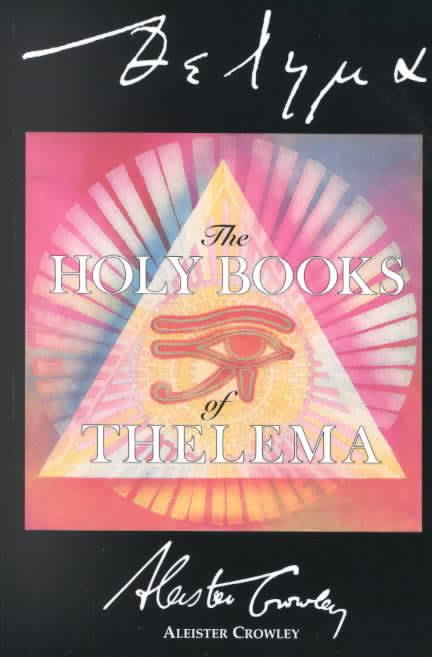9.2 /10 1 Votes
5/5 Barnes & Noble | 4.2/5 Goodreads Originally published 1969 | |||||||||||||||||||||||||||||||||
 | ||||||||||||||||||||||||||||||||||
Similar Works by Aleister Crowley, Alchemy books, Witchcraft books | ||||||||||||||||||||||||||||||||||
Aleister Crowley, the founder of Thelema, designated his works as belonging to one of several classes. Not all of his work was placed in a class by him.
Contents
Class A consists of works that are not to be changed, even to the letter. The Holy Books fall in this category. Class B consists of works of scholarship and enlightenment. Class C consists of material that suggests things other than the obvious. Class D consists of official rituals and instructions. Class E consists of manifestos, broadsides, epistles and other public statements.The Books
Liber AL vel Legis, also known as The Book of the Law, is the foundational text for Thelema. It is the only Holy Book that Aleister Crowley claimed to have had no part in the authorship of. Its primacy is indicated in chapter III, verse 47: This book shall be translated into all tongues: but always with the original in the writing of the Beast; for in the chance shape of the letters and their position to one another: in these are mysteries that no Beast shall divine.
The remaining texts were written between the years 1907 and 1911. According to Crowley, they were not so much written by him as through him, and are therefore referred to as inspired works.
Publication history
Some of these works were originally published by Crowley in 1909 under the title "ΘΕΛΗΜΑ". In 1983 these original texts, together with a number of additional texts, were published under the new title The Holy Books of Thelema by Ordo Templi Orientis under the direction of Hymenaeus Alpha.
Original Contents of ΘΕΛΗΜΑ
Additional Texts included in The Holy Books of Thelema
Class A
Class B
Class C
Class D
Notes on the List
Liber I originally was a Class B document, but was changed to Class A in 1913.
Liber LXI was originally Class A, then changed to Class B, then changed to Class D.
Liber CCXX and Liber XXXI are essentially the same. The latter is the handwritten original, CCXX was transcribed from the original and was given the number 220 because it is composed of 220 verses.
Liber CCCCXVIII has instructions in Aethyr 8 and 18 which are to be regarded as Class D. As it is a diary, it more properly belongs in Class B, except for the parts that the Angels dictated. Parts which are not consistently and clearly demarcated.
Liber DCXV, more commonly known as The Paris Working is a magical diary. The Class A material is so intertwined that segregating them apart is extremely difficult.
Liber DCCCCLXIII is Class A for the introduction only. The rest of the text is Class B.
The Stèle of Revealing is not part of the Holy Books, despite it being a part of the Gnostic Mass (Liber XV) that is performed by Thelemites as part of their sacred rituals.
The Comment of Ankh F N Khonsu is sometimes considered to be part of Liber Al vel Legis. At other times, it is considered to be a different document. In either instance, it has been understood by some to mean that no discussion of any of the Holy Books may take place, despite the fact that the Comment, which was written after all of the Holy Books were written, only applies to the Book of the Law. According to this interpretation, which appears to be Crowley's as well, the purpose of the Comment is to allow others to interpret Liber Al vel Legis for themselves; in other words, no one is to preach its contents or tell you their understanding of it is the one true understanding. However, the Comment also prohibits the study of the Book of the Law! The punishment for violating the Comment is anathema (shunning).
